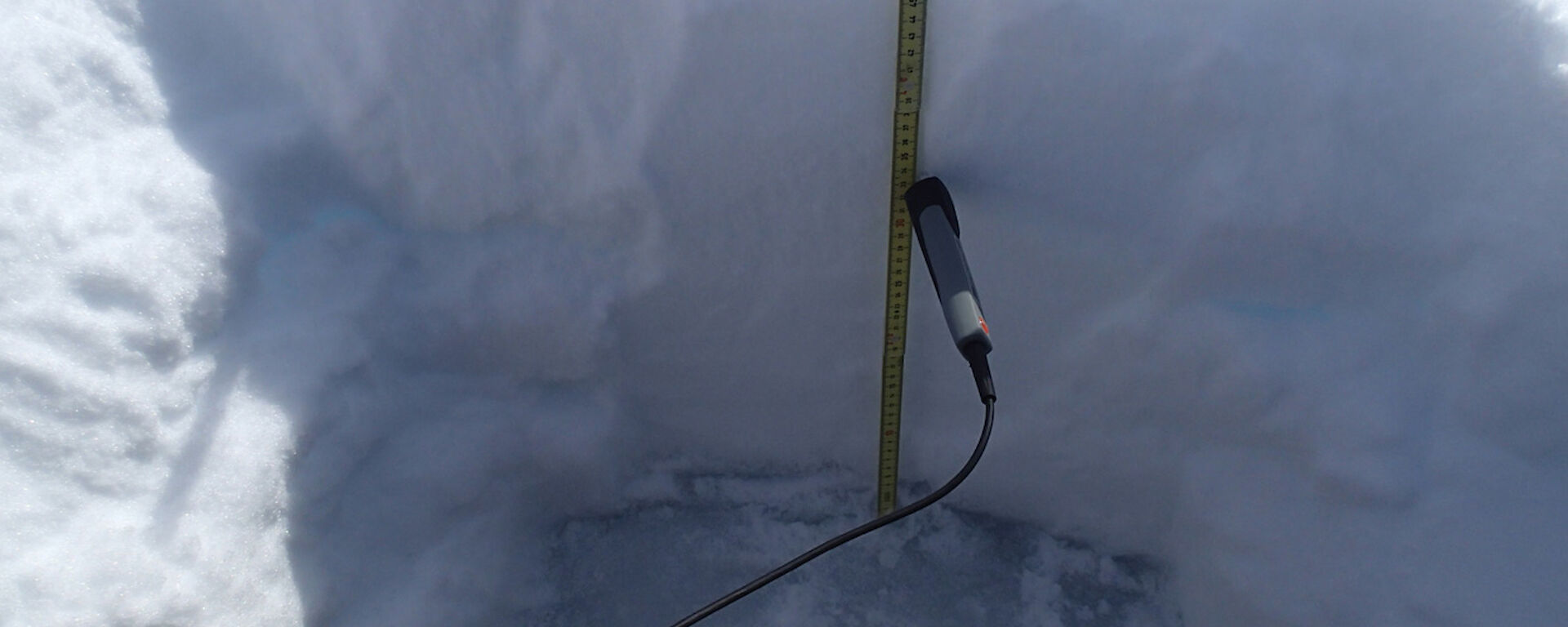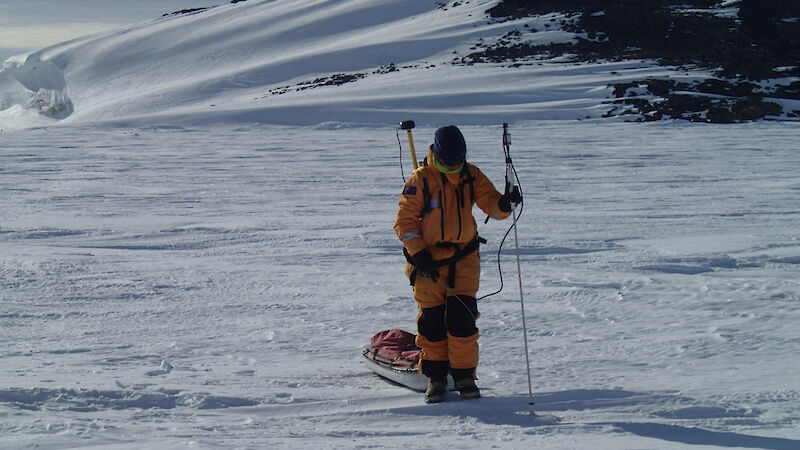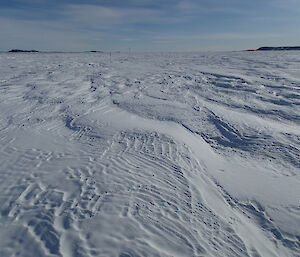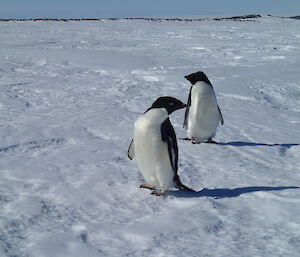25 November
Hello from Antarctica. I’m Rob Massom and I’m here to measure the properties and distribution of snow on the sea ice across our experimental site just offshore from Davis station. The sea ice here is stationary in a sheltered embayment and is called land-fast or fast ice — as distinct from pack ice, which is in constant motion driven by winds and ocean currents.
Not only is snow beautiful, it also plays a crucial role in regulating the properties and the seasonal growth and melt of sea ice around Antarctica. It forms both an insulative blanket and a very white surface that largely reflects (rather than absorbs) incoming solar radiation, reducing the sun’s heating effect.
The magnitude of these effects depends on the snow thickness and properties, which also affect the spectral distribution of light available for growth of microscopic algae in the underlying sea ice. This information is needed by other components of this project — not least by Klaus — to enable him to interpret data from the light sensor attached to his ROV.
Our work has two parts that are carried out after Klaus has “flown” his ROV and before the ice is drilled and core measurements are taken.
The first involves measuring the thickness of the snow along and around the ROV transect, using a combination of probes that penetrate through the snow to the ice surface. While Pat Langhorne and Petra Heil are doing this, I dig snow pits at known locations above points where Klaus has taken under-ice measurements using a hand-held light sensor. This enables me to collect detailed information on the properties of the snow as a function of height above the sea ice surface i.e., its stratigraphy, the thickness of constituent layers, grain size and type (using a field microscope), density, hardness, temperature and salinity.
This information is important to the overall project, but it also provides clues to the meteorological history of the ice. Our first results suggest that this snow cover is at the transition between winter and summer melt — a fascinating time to be studying snow.
As I write, a blizzard is roaring outside my room. This is a stark reminder of the importance of wind in redistributing the snow across the sea ice surface, to strongly affect its thickness distribution and surface roughness characteristics.
While we have measured snow thicknesses of approximately 50cm at the crest of snow dunes, such as those shown in the photograph, intervening wind-eroded areas have much lower snow thickness values (of 5–10cm). Dunes like these are extraordinarily beautiful natural sculptures.
I’m certainly looking forward to seeing how things change and develop, snow-wise, over the coming days — once this blizzard stops that is!
Rob Massom — Co-Investigator





